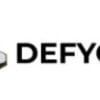- Cube Chain blockchain has launched its testnet. We discuss the move and what it means for developers and users.
The testnet for the Cube Chain blockchain is now live, according to a recent announcement by the company. Consequently, from 25th of May to the 25th of June, Cube will be running an online test-net incentive activity. During this time, developers can compete for gas fee awards in the DAPP deployment competition. Also, during this time, there will be ongoing hackathons, with prize rewards to the top teams. With the Layer 1 blockchain as a foundation, Cube Chain addresses the issue of blockchain expansion by providing a rapid and low-cost trading platform for its users.
The Cube Chain infrastructure unpackaged
Cube Chain is a public blockchain that offers great performance and is highly scalable. Also, it is compatible with the EVM and the Cosmos ecosystems. Its modular layered architecture and self-created Collaborative Rollup ensures transaction security. Because of these characteristics, it can support both multi-chain and cross-chain architectures with equal ease. GameFi, Metaverses, and DeFi can all benefit from Cube Chain’s custom-built features.
Cube Chain has taken another significant step ahead with the launch of its testnet as it works toward its goal of actively participating in the development of Web3.0 and the establishment of decentralized cross-chain protocols. Specifically, Cube is working to improve the Web 3.0 infrastructure to become a key component of the Metaverse of the future. A decentralized identity system allows Cube DAO members to engage in the organization’s test-net.
Core Cube Chain features include the “Chaos” Consensus. Chaos is a pipelined-optimized BFT consensus that provides high transaction throughput with decentralization, security and fast transaction confirmation. Cross-chain communication protocol known as “Time Crossing” is another essential feature. Using this capability, programs can move seamlessly between the Cosmos IBC protocol and DeFi contracts on different chains. Consequently, Cube is on track to solidify its position as a preferred location for low-cost transactions, EVM and Cosmos ecosystem interoperability, and revolutionary BFT protocol.





